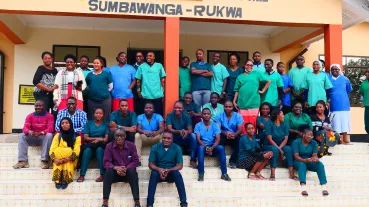HM KNUST Low Vision Project

Situation:
In sub-Saharan Africa, more than four million people are blind, and about seventeen million suffer from moderate to severe visual impairment, with the etiology of vision loss poorly understood. Optometrists' work is made difficult or impossible by the lack of assistive devices for the visually impaired and the absence of referral centers for routine treatment of the visually impaired, so that about two-thirds of patients seeking treatment for the visually impaired are often not treated.
Indicators:
At the KNUST in Kumasi, Ghana a tertiary LV center is functional for practical training and treatment of patients in June 2024.
Three secondary LV centers are opened and fully equipped until December 2024 and six primary LV centers are opened until June 2025.
At the KNUST in Kumasi, Ghana a tertiary LV center is functional for practical training and treatment of patients in June 2024.
Three secondary LV centers are opened and fully equipped until December 2024 and six primary LV centers are opened until June 2025.
1. Establish an academic low vision course and tertiary low vision centre at the Department of Optometry and Visual Science, KNUST, Kumasi, Ghana
2. Establish a model low vision service which connects the tertiary low vision centre at KNUST with three secondary and six primary low vision centers
3. Conduct a visual impairment and low vision study at the network of low vision centers established
4. Organize continuing professional development programs for eye care professionals
5. Organize a West African Regional Workshop on low vision practice.
This project will train students and eye care professionals at different levels of health care. For sustainable implementation of low vision services, we cooperate with local hospitals and eye clinics from the beginning. We are establishing secondary and primary low vision centers that will provide a model service to patients in the Ashanti region. These centers will be established in accordance with WHO international standards for the rehabilitation of the visually impaired. These centers will be linked to KNUST's tertiary center for the visually impaired to ensure the transfer of knowledge from the latest research findings into clinical work.
The linking of local health centers with regional clinics up to university level care characterizes this project. In addition, a sustainable online learning platform for the training of already established healthcare providers in the field of low vision care is being established.




